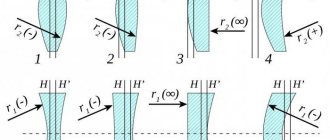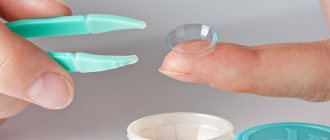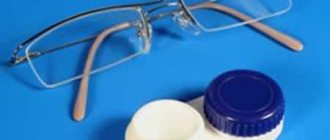What contact lenses are used to correct vision?
Let's start with the fact that the main contact lenses for many years have been optical ones. They are designed to correct common refractive errors today: myopia and farsightedness. Particularly popular among modern buyers are such models as:
- Acuvue Oasys with Hydraclear Plus;
- Soflens Daily Disposable by Bausch + Lomb;
- Biofinity from CooperVision;
- Air Optix Aqua from Alcon;
- Miru 1 day from Menicon.
Toric and multifocal models are also actively used. Toric lenses are prescribed by ophthalmologists to patients who suffer from astigmatism, a disease associated with a change in the original shape of the lens. The modern market offers a wide selection of such optical products, for example:
- 1-Day Acuvue Moist for Astigmatism;
- Air Optix for Astigmatism from Alcon;
- Biofinity Toric from CooperVision;
- Contact Day 30 Compatic Toric by Carl Zeiss;
- PremiO Toric from Menicon.
Multifocal contact lenses are used by people suffering from presbyopia - “senile farsightedness.” This is an eye refractive error in which a person loses the ability to clearly see objects located at close range. For this pathology, ophthalmologists recommend their patients wearing the following models:
- Air Optix Aqua Multifocal from Alcon;
- 1-Day Acuvue Moist Multifocal;
- Biofinity Multifocal from CooperVision;
- Clariti 1 day Multifocal from Sauflon;
- PureVision Multi-focal from Bausch + Lomb.
The decision about which lenses will help correct a particular pathology should be made only by an ophthalmologist, based on the results of the examination. You should not select optical products yourself. Entrust the choice to a professional.
According to the replacement period, soft contact lenses are divided into:
1. Traditional contact lenses (conventional). Their service life ranges from 6 months to 1 year. Available in glass bottles. They are usually made by turning. 2. Contact lenses for scheduled replacement. a) regularly replaced lenses (frequent replacement) (usually quarterly replacement). Available in blisters. The concept was proposed in the early 1980s. b) lenses with frequent scheduled replacement (disposable) (replacement once a month or more often). Available in blisters. Lenses of this type first appeared in 1988. c) daily replacement contact lenses (One Day) (single use, put on in the morning, removed in the evening and thrown away). Available in blisters. Lenses of this type appeared in 1994. Planned replacement of contact lenses is certainly a big step forward in vision correction, because frequent replacement of contact lenses has a number of undeniable advantages over long-term wear lenses. Most of the largest manufacturing companies produce only soft lenses for scheduled replacement, and the production of traditional lenses has ceased. Soft contact lenses for routine replacement have a number of advantages over traditional lenses.
Benefits of a planned replacement scheme
• Good optical properties. • Availability of spare lenses in case of unexpected loss or damage. • Reduces the risk of eye infection. • Good wettability of all areas of the lens, which increases comfort when wearing contact lenses and reduces staining of the cornea. • Reduction of mechanical irritation of the eye by deposits on the contact lens. • Reducing allergic reactions to deposits on the lens. Over the past few years, the category of daily contact lenses has been developing particularly successfully. Many primary patients wish to be fitted with lenses in this category, if possible. In addition to the general advantages of planned replacement, they also have additional useful qualities.
Benefits of daily disposable contact lenses
• The most suitable option for occasional wear. • Can be used in patients with allergic eye diseases. • Possible use in patients with inflammatory diseases of the eyelids (blepharitis, meibomitis) during remission. • No need for lens care. In some countries (for example, Great Britain) 40% of patients use lenses of this type. The main reason why daily lenses have not replaced other soft contact lenses from the market is their relatively high price, which, when wearing contact lenses daily, is higher than that of routine replacement lenses along with care products.
What types of decorative contact lenses are there?
Many users prefer to wear decorative lenses, which can be colored or tinted. The difference between them lies in the saturation of the pigment. If a brighter coloring component was used to create optical products, then such contact lenses are called colored. If the component is not particularly saturated, then such models are tinted. They should be chosen by those users who want to emphasize the natural beauty of their eyes without changing their natural color.
Some users refuse to use these contact lenses because they believe that they are harmful to the eyes. However, it is not.
The coloring pigment is applied not to the lenses themselves, but to their inner layer, which avoids any contact of the paint with the inherently sensitive mucous membrane. The central part of the optical product, located in the pupil area, remains unpainted, and therefore you can wear such eye lenses without any worries.
Despite their name, decorative lenses are used not only to change the natural color of the iris. They are often prescribed in the following cases:
- with iris defects (leukoma, heterochromia or coloboma);
- to protect the visual organs from ultraviolet rays;
- for amblyopia to ensure uniform visual load.
In addition, some colored contact lenses differ in dioptres. This means that there are models produced with optical power. This type of optical product should be chosen by those users who are interested not only in changing the natural shade, but also in vision correction. Their selection should only be carried out by a qualified specialist.
Basic rules for caring for contact lenses
When handling and caring for lenses, certain hygiene rules must be observed.
The basic rules for caring for contact lenses are as follows:
- Always wash your hands thoroughly before inserting your lenses.
- Touch the lenses with your fingertips, not your nails (it is advisable to keep your nails short).
- Never use saliva, tap water or other liquids to wet lenses - there are special solutions for this.
- After removing your lenses, do not leave them exposed to air for more than 30 minutes. This will cause their surface to dry out and gradually lose their wettability. If this does happen, throw away the lenses and use new ones.
What are the different dioptres of contact lenses?
One of the main parameters that is especially important at the moment when you select lenses is optical power, or diopters - a unit of measurement of the quality of visual functions. The lower a person’s visual acuity, the greater the number of diopters the prescribed lenses will have. They can be indicated in the prescription either with a “plus” sign if we are talking about myopia, or with a “minus” sign if the patient is diagnosed with farsightedness.
Almost always, optical products are selected with fewer diopters than needed. Doctors explain this by saying that in this way the decrease in visual acuity can be stopped. As a rule, contact lenses for myopia are selected as follows - the diopters are increased until the user feels comfortable wearing optical products. For example, some people with +8 vision use contact lenses with +6 optical power.
Only an ophthalmologist can select lenses by dioptre. Under no circumstances should you choose optical products on your own or relying on the advice of friends or acquaintances. It is important to understand that incorrectly set diopters (and this cannot be done without special equipment and appropriate education) and lenses purchased with their calculations can lead to vision deterioration.
Wearing contact lenses: rules of use
Before using contacts, it is important to familiarize yourself with the basic rules for wearing them:
- If you wear contacts, cover your eyes when using hairspray, deodorants, or other aerosols.
- Lenses will deteriorate (may change color and lose their properties) if you are constantly in a smoky room.
- If you have a cold or seasonal allergies, it is better to temporarily replace your lenses with glasses.
- Makeup should be applied after the lenses are put in, and should be removed after the lenses are removed. Cream and other cosmetics should not get on the surface of the lenses. Try to choose the highest quality cosmetics: non-falling mascara, finely dispersed shadows without coarse particles, non-smearing eyeliner. Currently, hypoallergenic cosmetics are produced for sensitive eyes, as well as special cosmetics for those who wear contact lenses.
- You can play active games and swim while wearing the lenses (only with a mask or swimming goggles).
If you experience discomfort, excessive tearing, changes in visual acuity, redness of the eyes or other problems, you should immediately remove the lenses and consult an ophthalmologist.
What types of lenses are available based on wear time and replacement schedule?
Which contact lenses should you choose? This largely depends on the period of wearing and replacement regimen, which the ophthalmologist considers most suitable for you. Today they highlight:
- day mode, designated as DW. Such lenses must be removed before going to bed;
- flexible, or FW. These optical products can be left in place for two to three days;
- extended, or EW. Such correction products can be used for a month without removing.
What are the terms of use of optical products? The safest are:
- one-day;
- weekly;
- two weeks;
- monthly.
How long you can wear these lenses is clear from the name. Some models can be used in daytime, flexible and prolonged modes.
Also on the modern market are optical products that can be worn during:
- three months;
- six months;
- of the year;
- 18 months.
The presented modes are designed for long-term wearing. Such lenses are considered less safe, but they are much cheaper than, for example, one-day lenses, which is why many users choose them.
Types of lenses by purpose
Before choosing lenses for your eyes, you will need to study the main types for their intended purpose:
- Optical. The selection of lenses of this type will be required to correct various refractive errors.
- Cosmetic lenses are intended for the correction of congenital or acquired eye defects.
- Decorative products can significantly enhance the natural color of the eye or change it completely.
- Therapeutic. These are fairly soft lenses that provide significant comfort. They are able to reliably protect your cornea and provide comfort while wearing.
Before choosing the right lenses for your eyes, you need to decide on the type we presented above.
Special purpose contact lenses for eyes
In addition to the above varieties, today there are other types of optical products, including:
- hybrid, used in case of intolerance to models made of hard polymers;
- orthokeratological, which correct vision at night and allow you to do without optical products during the day;
- scleral, which are larger in size and are used for keratoconus, an irregularly shaped cornea.
Remember that the decision about which lenses to choose should only be made by a qualified specialist.
By the way, you can undergo an examination and receive a prescription for the purchase of contact correction products at our Center for Contact Correction of Glasses.No.
Flexible lens wearing mode
Flexible lens wearing is the best option for people who often forget to remove contact lenses at night. They allow oxygen to reach the cornea even during sleep, which eliminates the risk of redness, burning, itching, tingling and dryness in the eyes.
Ophthalmologists do not recommend sleeping in optical products unless necessary. However, flexible contact lens wear allows for this. Using these products, you can enjoy the freshness and comfort as if you had just put on a new pair of lenses in the morning. It should be remembered that planned replacement models with a flexible wearing regime require systematic care with a solution. Cleaning and disinfection should be done in the morning.
You should not continue to use optics after sleep without treatment - this can provoke the development of bacteria on its surface, as well as the appearance of inflammation and discomfort in the eyes.
In the manufacture of these lenses, modern materials with high oxygen permeability are used, so many models have several wearing modes: flexible, extended and continuous.
Features of these lenses:
- They can be left on the eyes overnight.
- They have a high oxygen permeability.
- Eliminates the risk of dryness, burning, redness and pain in the eyes in the morning.











